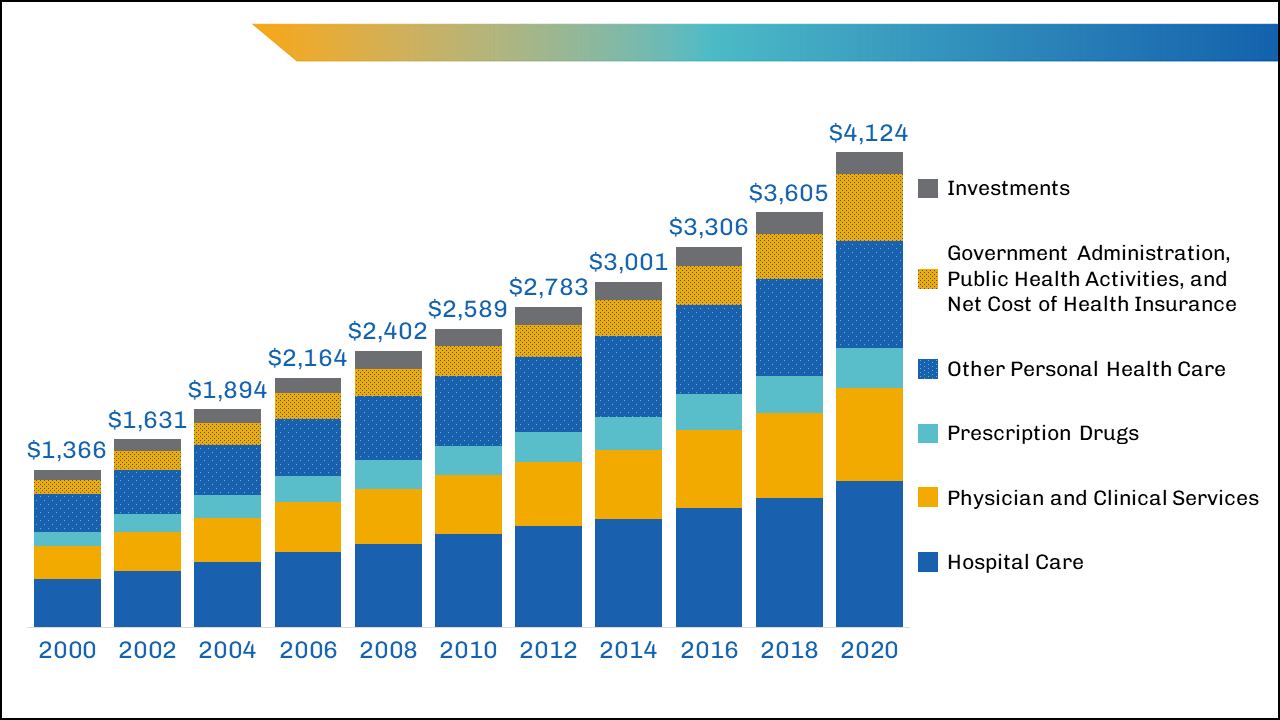Why Healthcare RCM is Important for Financial Wellness in Medical Practices
Why Healthcare RCM is Important for Financial Wellness in Medical Practices
Blog Article
A Comprehensive Guide on Just How Medical Care RCM Functions to Simplify Payment and Collections
Navigating the complexities of health care revenue cycle administration (RCM) is crucial for service providers intending to boost their payment and collections processes. The guide unpacks the details of RCM, from patient registration to receivables management, supplying understandings into maximizing each action. Incorporating advanced technology and standard treatments can substantially reduce case rejections and accelerate payment cycles. Yet, real challenge hinges on flawlessly merging these aspects to boost capital. As we explore the core elements and strategies that drive performance, one question remains: exactly how can health care entities ideal setting themselves to thrive financially in an ever-evolving market?
Understanding Revenue Cycle Management
Realizing the ins and outs of Revenue Cycle Administration (RCM) is crucial for healthcare organizations aiming to optimize their economic efficiency. RCM is an important administrative function that incorporates the whole monetary procedure of client care, from the initial appointment setting to the final payment of the balance. It is an intricate treatment created to recognize, gather, and handle the profits from the services given to individuals. Reliable RCM ensures that medical care companies receive exact and prompt payments, minimizing the risk of revenue loss and enhancing cash circulation.
The RCM process begins when a client schedules a visit and extends with the individual's care trip, consisting of invoicing and collections. An essential purpose is to lower the time between getting and giving a service repayment, hence enhancing the company's monetary health and wellness. RCM entails different features such as patient enrollment, insurance confirmation, fee capture, coding, asserts submission, repayment uploading, and managing denials and charms.
Secret Components of RCM
In the world of Revenue Cycle Monitoring (RCM), understanding its essential parts is basic to accomplishing economic effectiveness within medical care companies. RCM is a detailed procedure that incorporates numerous phases, each vital to ensuring effective billing and collections. The main elements consist of individual enrollment, insurance policy confirmation, fee capture, coding, case entry, payment posting, and accounts receivable administration.


Once coded, claims are submitted to payers, where accuracy is vital to prevent delays or beings rejected - Healthcare RCM. Payment publishing entails videotaping the gotten repayments, which enables for the reconciliation of accounts. Last but not least, receivables administration concentrates on tracking and addressing unpaid insurance claims, making sure prompt follow-up and resolution
Each component of RCM is adjoined, and inefficiencies in any type of component can disrupt the whole cycle. For that reason, grasping these elements is necessary for doctor to maximize earnings and improve their monetary health.
Strategies for Efficient Payment

Systematizing invoicing procedures throughout the company is another key strategy. Establishing clear standards for documents, coding, and submission helps preserve consistency and conformity with governing demands. Training team routinely on these procedures ensures every person is updated with the most recent modifications in billing codes and payer plans.
Accurate cost capture is necessary in protecting against earnings leak. Carrying out regular audits and surveillance systems enables the recognition and modification of inconsistencies before they influence profits. Furthermore, maintaining open lines of communication with payers helps to rapidly settle any conflicts or misconceptions that may occur.

Lastly, interesting people early in the billing procedure by giving clear estimates and educational materials concerning their economic obligations can dramatically minimize confusion and boost repayment timeliness. These methods collectively add to a much more monetarily healthy and balanced and reliable payment system.
Enhancing Collections Processes
Offered the complexities of clinical payment and the range of payer demands, enhancing the collections procedure entails implementing calculated actions that guarantee prompt and accurate settlement of services rendered. Automation devices can help in tracking claim statuses, sending out prompt pointers to patients, and handling rejections much more effectively.
Training personnel to recognize the subtleties of insurance plan and payment codes is just as essential. This understanding equips them to deal with billing inconsistencies swiftly and interact efficiently with clients concerning their monetary duties. Moreover, clear and clear person communications are essential. Supplying detailed explanations of costs and supplying flexible layaway plan can enhance individual fulfillment and timely settlements.
Routine audits of the collections process need to be performed to determine locations for enhancement and guarantee compliance with regulations. By analyzing information, health care organizations can identify fads, anticipate prospective concerns, and adjust techniques as necessary (Healthcare RCM). Inevitably, a well-enhanced collections procedure not just sustains economic Visit Website health and wellness however likewise adds to a more seamless experience for people and staff alike
Optimizing Profits Streams
Building upon the foundation of a solid collections process, medical care companies can further reinforce their financial stability by purposefully enhancing revenue streams. This includes a multi-faceted method, starting with a detailed evaluation of existing income sources to recognize inadequacies and areas for development. Using advanced information analytics tools enables companies to acquire understandings right into payer mix, client demographics, and service utilization patterns, allowing for data-driven choices that improve revenue capture.
Executing automated invoicing systems can dramatically lower mistakes and quicken claims processing, guaranteeing that profits is accumulated extra successfully. In addition, maximizing payer contracts through routine arrangements can improve reimbursement rates and terms, directly influencing the lower line. Diversifying solution offerings, such as including telehealth or health care, can also attract a wider individual base, therefore boosting earnings potential.
An additional essential element is improving client involvement and complete satisfaction, as satisfied people are extra most likely to abide by treatment plans and make prompt payments. Offering adaptable payment choices and transparent invoicing methods can boost collections and foster person loyalty. Healthcare RCM. By adopting these methods, medical care companies can produce a much more resistant economic framework, guaranteeing continual development and security in an ever-changing market landscape
Conclusion
Finally, healthcare Income Cycle Administration (RCM) plays an important role in maximizing billing and collections procedures by integrating crucial components such as individual registration, insurance policy verification, fee capture, coding, claims entry, and balance due management. By using innovative modern technology, standardizing procedures, and fostering client involvement, doctor can significantly minimize case denials, speed up payment cycles, and improve cash flow. This comprehensive approach to RCM eventually causes enhanced economic efficiency and sustainability for medical care organizations.
The RCM procedure starts when an individual timetables a visit and expands via the individual's care journey, consisting of invoicing and collections.Another important element is improving patient interaction and satisfaction, as satisfied individuals are more likely to stick to therapy strategies and make timely settlements. Providing adaptable payment options and transparent invoicing practices can boost collections and foster patient loyalty.In final thought, medical care Revenue Cycle Administration (RCM) plays an essential duty in optimizing payment and collections processes by incorporating vital parts read this post here such as patient registration, insurance coverage verification, fee capture, coding, claims entry, and accounts receivable administration. By click to read using advanced innovation, systematizing treatments, and cultivating patient interaction, health care companies can considerably lower case denials, speed up repayment cycles, and enhance cash circulation.
Report this page